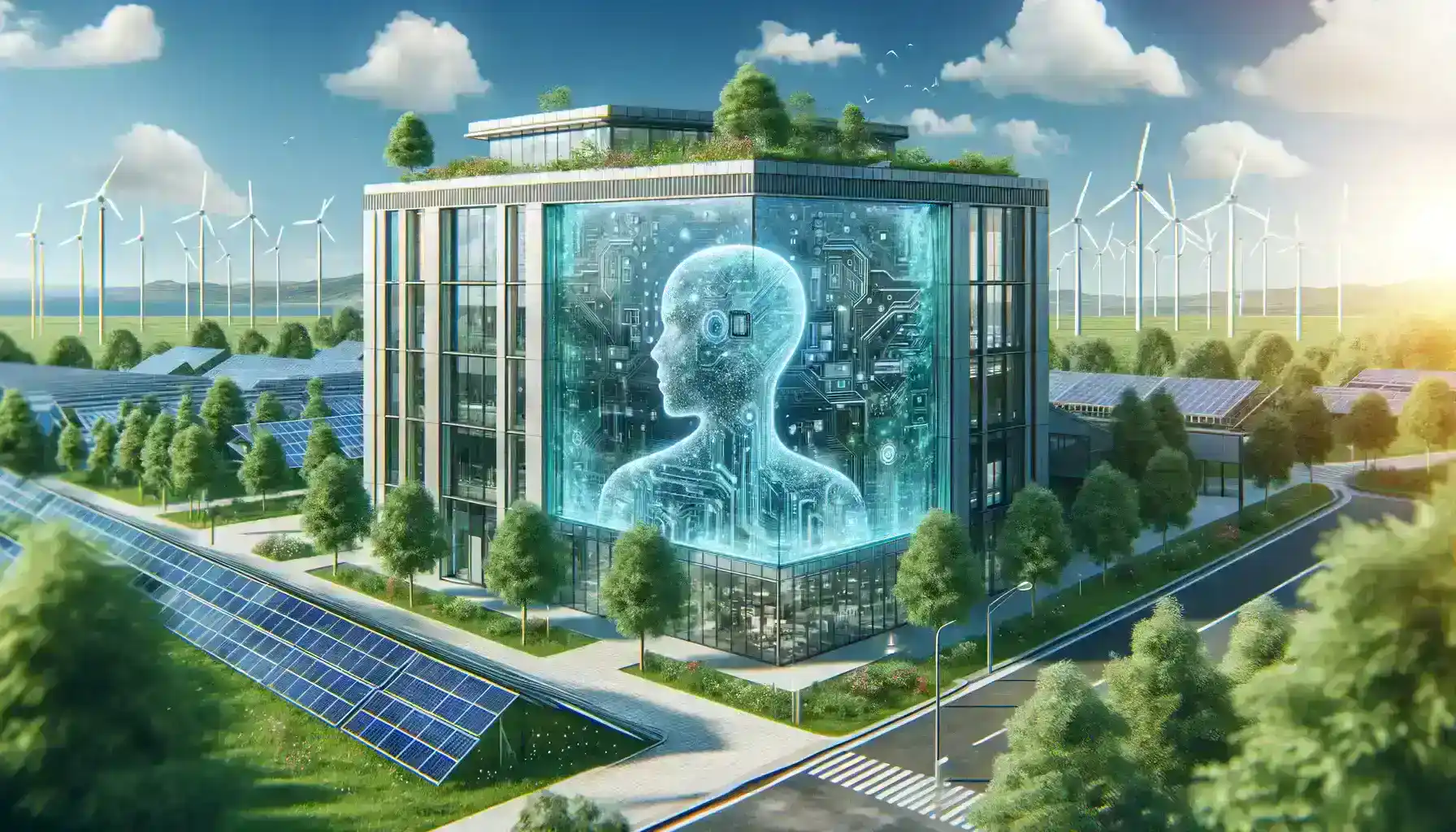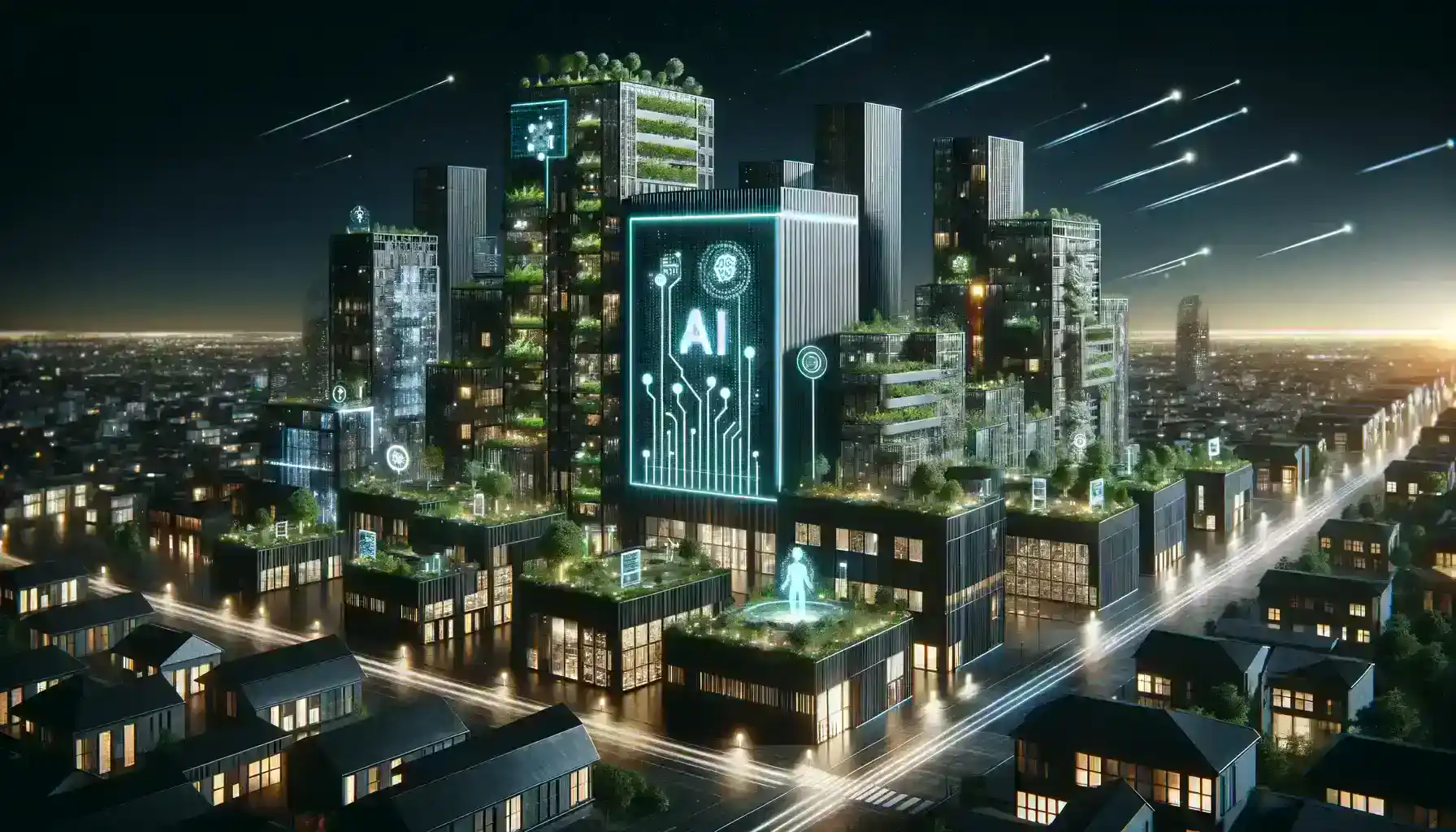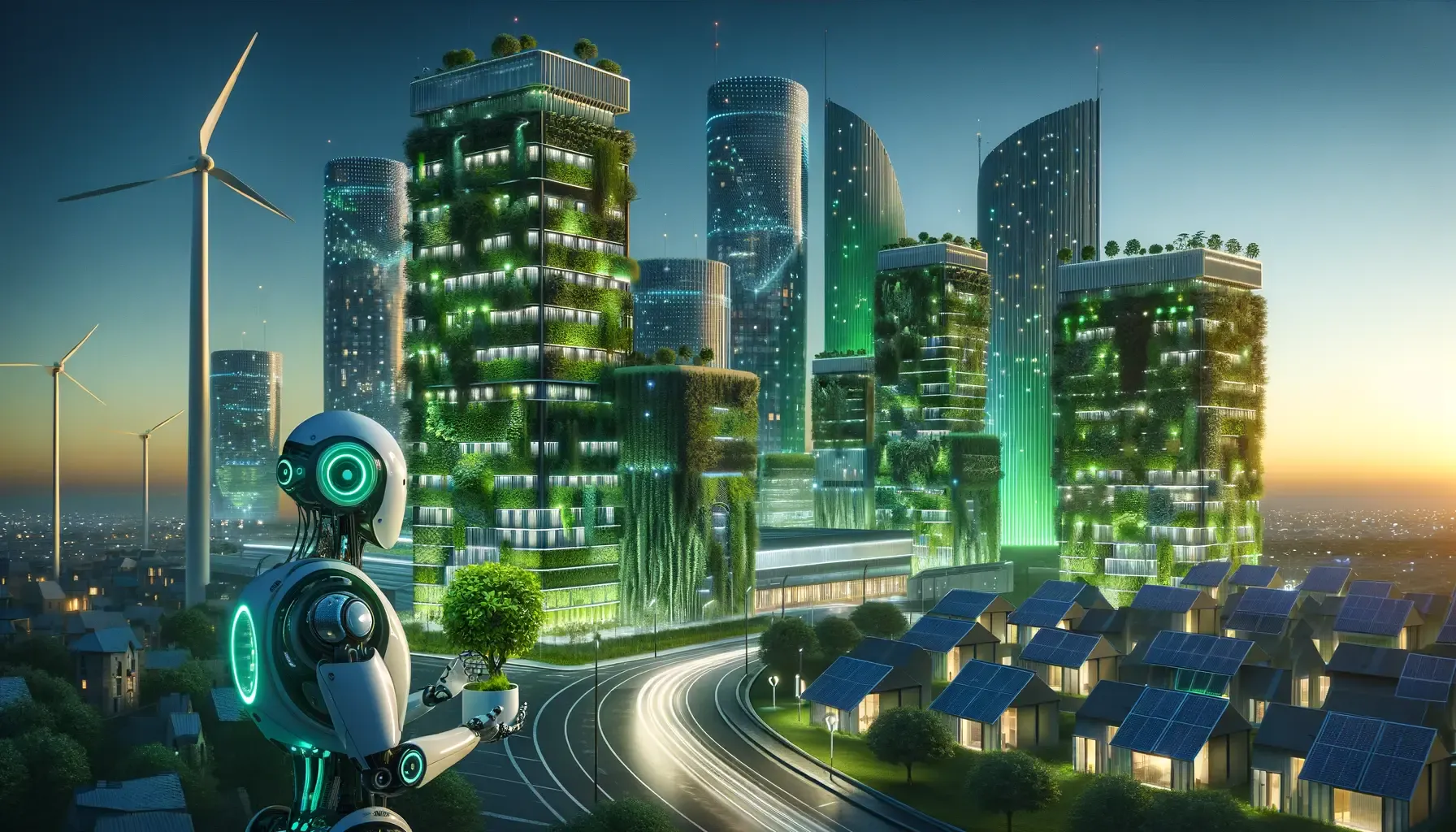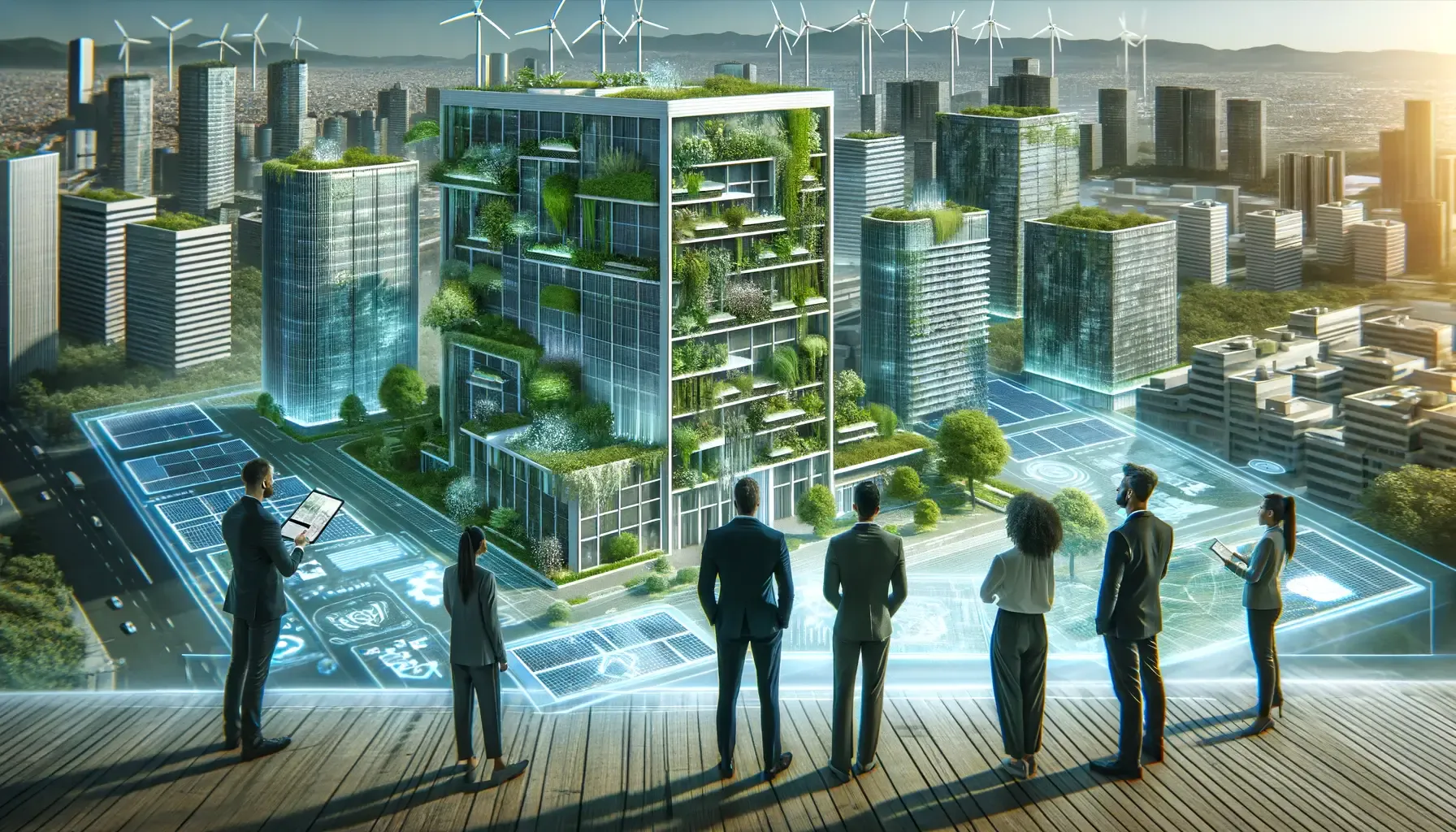Table of Contents
The construction industry is undergoing a transformative shift towards sustainability, driven by the urgent need to address environmental concerns. Green building technologies have emerged as a pivotal solution to reduce carbon footprints and enhance energy efficiency in construction projects. In this article, we will explore the role of Artificial Intelligence (AI) in revolutionizing green building technologies, making them more efficient and environmentally friendly.
1. Understanding Green Building Technologies
Green building technologies represent a paradigm shift in the construction industry, aiming to create structures that are not only functional but also environmentally responsible and resource-efficient. To appreciate the impact of Artificial Intelligence (AI) in this context, it’s crucial to lay the groundwork by understanding the core principles of green building.
- Sustainable Construction Practices: Sustainable construction practices encompass a wide range of strategies aimed at reducing waste, conserving resources, and minimizing the ecological footprint of construction projects. AI-driven construction management systems can optimize schedules, reduce over-ordering of materials, and enhance on-site logistics to streamline the construction process and minimize waste generation.
- Water Efficiency: Green building technologies prioritize water conservation through features like low-flow fixtures, rainwater harvesting, and efficient irrigation systems. AI can contribute by monitoring water usage patterns and adjusting water flow and distribution in real-time to maximize efficiency.
- Indoor Air Quality: Green buildings prioritize indoor air quality using materials that emit fewer pollutants and incorporating advanced ventilation systems. AI-powered sensors can continuously monitor indoor air quality, adjusting ventilation rates to ensure occupant health and comfort while minimizing energy consumption.
- Certification Standards: Various green building certification standards, such as LEED (Leadership in Energy and Environmental Design) and BREEAM (Building Research Establishment Environmental Assessment Method), set benchmarks for sustainable construction.

2. The Intersection of AI and Green Building
The integration of Artificial Intelligence (AI) into the realm of green building technologies has ushered in a new era of innovation and sustainability. AI’s potential transcends mere automation; it encompasses a wide array of applications, including machine learning, data analytics, and predictive modeling, all of which are pivotal in optimizing resource utilization and minimizing waste in green building projects.
- Data Analytics for Sustainable Design: Green building projects often involve complex design decisions, including the selection of eco-friendly materials and construction methods. AI-driven data analytics can process vast amounts of information, such as material specifications, environmental impact data, and cost projections, to help architects and builders make informed choices.
- Waste Reduction through Smart Monitoring: AI-powered sensors and monitoring systems are increasingly being used in green building projects. These systems can detect inefficiencies, such as water leaks or HVAC malfunctions, in real-time. When anomalies are identified, AI can trigger automated responses or alerts, allowing for immediate corrective action.
- Continuous Improvement: AI’s ability to learn and adapt over time is a significant advantage in green building. As AI systems gather more data and insights from ongoing operations, they can continuously refine their algorithms to optimize resource utilization and waste reduction further, ensuring long-term sustainability.
3. Energy Efficiency through AI
Energy efficiency lies at the heart of green building technologies. Achieving optimal energy consumption not only reduces operational costs but also significantly contributes to a smaller environmental footprint.
- Load Shedding: During peak demand periods, AI can initiate load shedding strategies, temporarily reducing non-essential equipment loads to prevent grid strain and reduce energy costs.
- Environmental Impact: By reducing energy consumption, AI-driven energy efficiency strategies contribute significantly to lowering greenhouse gas emissions and the building’s overall environmental impact.
- Energy Storage Optimization: Green buildings often incorporate renewable energy sources like solar panels. AI can manage energy storage systems, optimizing when to charge and discharge batteries to maximize self-consumption and grid independence.
- Smart HVAC Systems: Modern HVAC technicians rely on the best app for hvac technician to manage increasingly complex service demands as smart systems become the industry standard. Heating, ventilation, and air conditioning (HVAC) systems are significant energy consumers in buildings. AI can optimize HVAC operations by adjusting temperature and ventilation based on real-time data, occupancy levels, and individual preferences. With the right HVAC tool, businesses can enhance efficiency, reduce costs, and improve overall comfort.

4. Enhancing Sustainable Materials Selection
In the quest for green building technologies, the selection of sustainable materials is a critical factor that significantly impacts a construction project’s environmental footprint. Traditional methods of evaluating materials for sustainability involve manual research, often requiring architects and builders to sift through a myriad of data sources and certifications.
- Data Analysis and Material Databases: AI algorithms can analyze vast databases of materials, considering factors such as environmental impact, sourcing, energy efficiency, and recyclability. By tapping into these databases, AI can provide architects and builders with a comprehensive list of eco-friendly materials that meet project requirements.
- Performance Predictions: AI can predict how different materials will perform under various conditions, ensuring that chosen materials not only meet sustainability criteria but also deliver the desired performance and longevity.
- Cost Optimization: Sustainability doesn’t have to come at a premium cost. AI can help strike a balance between sustainability and cost-effectiveness.
- Compliance and Certifications: AI can keep track of changing regulations and certifications related to sustainable construction materials selected for a project that is compliant with the latest environmental standards and eligible for incentives or certifications like LEED (Leadership in Energy and Environmental Design).
5. Predictive Maintenance and Longevity
Maintenance plays a pivotal role in ensuring the sustainability and efficiency of green building technologies. It involves keeping building systems and components in optimal working condition to minimize energy wastage, reduce operational costs, and extend the overall lifespan of the structure. Traditional maintenance practices often rely on scheduled inspections and reactive responses to issues, which can be both costly and inefficient.
- Optimized Maintenance Scheduling: Traditional maintenance schedules often involve routine checks and replacements at fixed intervals, regardless of the actual condition of the equipment.
- Cost Reduction: Predictive maintenance can significantly reduce maintenance costs in green building technologies. By addressing issues before they become critical, organizations can avoid emergency repairs, reduce energy wastage, and extend the lifespan of expensive equipment and building systems.
- Enhanced Energy Efficiency: Many green building technologies, such as solar panels and geothermal heating systems, require regular upkeep to function optimally.
- Sustainability Impact: Predictive maintenance contributes to the overall sustainability of green building technologies by reducing the need for replacements and resource-intensive repairs.

Case Study: Microsoft’s Silicon Valley Campus
Microsoft’s Silicon Valley campus exemplifies of using AI to enhance building management and sustainability. The campus uses an AI-powered platform that integrates data from various sources, including weather forecasts and building systems, to optimize energy usage and reduce greenhouse gas emissions.
AI Impact: By continuously analyzing data and predicting weather conditions, AI helps the campus adjust heating, cooling, and lighting systems in real time. This has led to significant energy savings and a reduced environmental footprint. Microsoft’s Silicon Valley Campus showcases how AI can be applied to existing structures to enhance sustainability.
Challenges and Future Trends in Green Building Technologies
As we embrace the integration of AI into green building technologies, it’s important to acknowledge the challenges that come with this promising transformation and look ahead to future trends that will shape the green construction industry.
- The Challenge: Data Privacy Concerns in Green building projects often involve the collection and analysis of sensitive data related to energy usage, occupant behavior, and building performance.
- Future Trend: AI’s role in predictive analytics will continue to evolve. Future AI systems will become more sophisticated in predicting and preventing energy inefficiencies and maintenance issues.
- The Challenge: The successful implementation of AI in green building technologies relies on skilled professionals who can develop, maintain, and operate these systems. There may be a shortage of individuals with the necessary expertise

- Future Trend: Materials science is advancing rapidly with AI. Future trends may see the development of AI-generated sustainable materials that are not only eco-friendly but also cost-effective and durable.
- The Challenge: Building codes and regulations often lag behind technological advancements. Navigating the regulatory landscape while incorporating AI into green building projects can be challenging.
- Future Trend: Collaborative platforms that facilitate the sharing of data and insights among stakeholders in green building projects will become more prevalent. These platforms will enhance communication, coordination, and decision-making in the construction and operation phases.
Conclusion
In the pursuit of a greener, more sustainable world, the marriage of Artificial Intelligence (AI) and green building technologies stands as a beacon of hope. As we conclude our exploration into this transformative partnership, it becomes abundantly clear that AI is not merely a tool but a catalyst for positive change in the construction industry.
Energy efficiency, the linchpin of sustainability, saw remarkable gains as AI-driven systems tirelessly monitored and adjusted building operations, mitigating energy waste and lowering operational costs.
Looking to the future, we anticipate a host of exciting trends. Advanced predictive analytics will refine our ability to predict and prevent inefficiencies, leading to more sustainable structures.
AI and green building technologies are kindred spirits, working in unison to create a sustainable and eco-conscious built environment. As we confront the challenges and embrace the trends, we find ourselves at the forefront of a transformative era, one where every brick, every structure, and every city is a testament to our commitment to a better, more sustainable world.